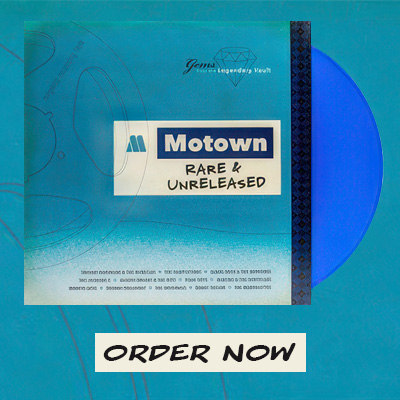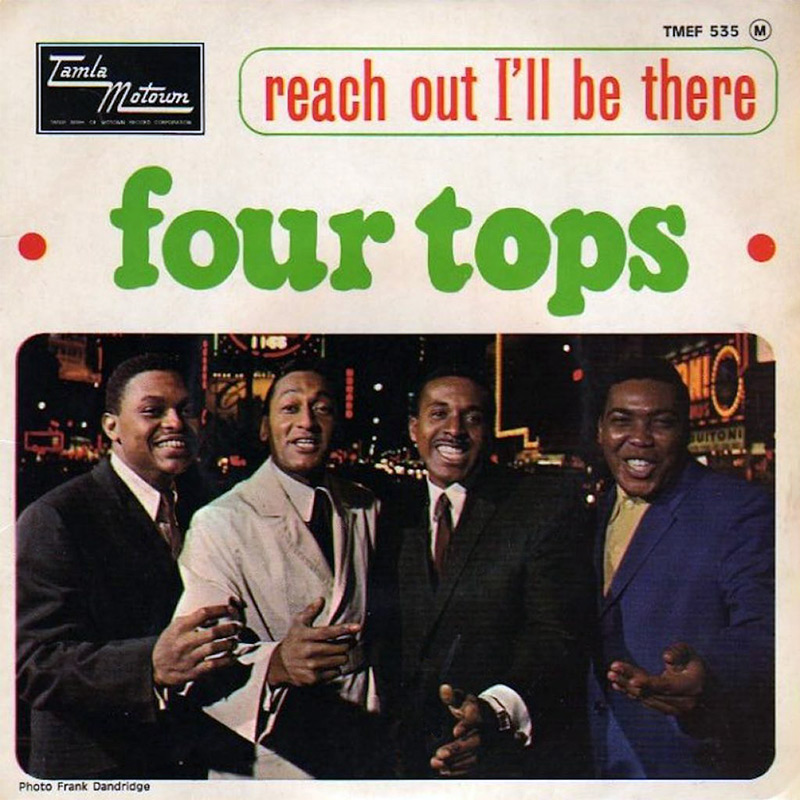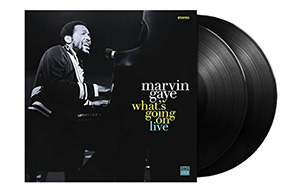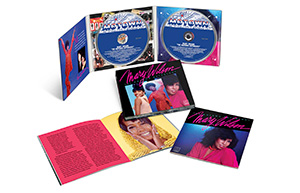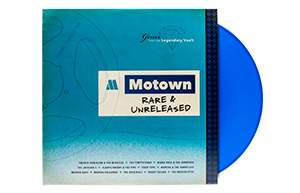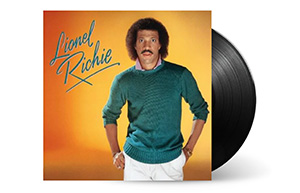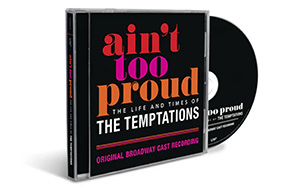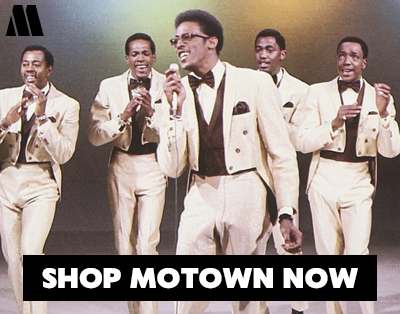Four Tops “Reach Out I’ll Be There”
Released as a single (Motown 1079) on Thursday, August 18, 1966.
With a Motown monument like “Reach Out I’ll Be There,” nearly everyone involved has a story, or at least an opinion. “Levi Stubbs of the Four Tops could interpret and deliver the meaning of a song better than anybody,” declared Berry Gordy in his autobiography, To Be Loved. Abdul “Duke” Fakir, the last surviving member of the original quartet, remembered Gordy notifying them that they needed their tax affairs in order because “we’re going to release the biggest record you’ve ever had.” Influential Detroit disc jockey Scott Regan recalled running into Levi after the recording session. “He did not like the way they made him shout. Then I heard the record. I was dumbfounded he felt that way. I told him, ‘Levi, you’re wrong! The vocal is great. This is gonna be a No. 1 record.’”
Its architects were Holland/Dozier/Holland, a team whose name is almost as synonymous with the classic Motown sound as the singers themselves. Addressing another “Reach Out” story – that Levi himself didn’t think he should sing lead on it – Lamont Dozier remembered how others felt it should only be Stubbs. “Everybody thought so, even the guys, Larry and Obie and Duke.” That said, Dozier acknowledged that one part of the song was inspired by an unlikely source. “Dylan was happening at the time, and the phrasing for ‘I’ll Be There’ came from listening to the way he sang. He’d do that thing [sings], ‘Heyy,’ and ‘Heyy’ and ‘Hoeww,’ where he’d drag a phrase out, that I liked. The day we wrote it, I just began mumbling: ‘Now if you feel like you can’t go on, because all of your hope has gone…’”
Levi’s load-bearing baritone made “Reach Out I’ll Be There” memorable, but no listener could ignore the power behind the voice and those of his fellow Tops. The bassline belonged to James Jamerson, of course, but on this occasion, the drummer was Richard “Pistol” Allen, rather than Benny Benjamin. The guitars were those of Robert White, Eddie Willis and Joe Messina; the all-important tambourine was in the hands of Norman Whitfield, who by this time at Motown was primarily a producer and songwriter. “That galloping sound on ‘Reach Out’ is a tambourine with no bells,” said Brian Holland, “with sticks being played on the head by Norman.”
When released in August 1966, the record rapidly reached its rightful place: at the top of charts around the world. It took only four weeks on the Billboard Hot 100 to claim a Top 10 slot; two weeks later, it was at the summit. In the U.K., the single debuted in the Top 20, and took only another two weeks to claim Number One, where it ruled for three weeks (one week longer than in the U.S.). Such was Britons’ passion for the Tops, ignited by “Reach Out I’ll Be There,” that a reissue of the record returned to the Top 20 – actually, only one slot short of the Top 10 – in the summer of 1988. This monument was never going to lose its shine.
A hit record of such stature lives on in many forms, attracting almost every type of performer, and interpreted in almost every genre. “Reach Out I’ll Be There” has been reshaped as disco (Gloria Gaynor), rock (Eddie Money), easy listening (Paul Mauriat), jazz (Count Basie) and reggae (the Slackers). There are the admirers (Michael Bolton, Michael McDonald, Boyz II Men) and the unlikely (Bill Cosby, the Cowsills, Petula Clark), as well as many from other lands: Australia’s Jimmy Barnes and Human Nature, Italy’s Rita Pavone, France’s Claude Francois and Sylvie Vartan, Spain’s Luis Miguel, Ireland’s Boyzone. Many Brits have remade the song, too, including Chris Farlowe, the Tremeloes, Paul Young, the Hollies, and the Human League. Back home at Hitsville U.S.A., there’s an Italian-language version recorded by the Tops themselves, and a dramatic 1971 remake by Diana Ross. Even one of the song’s three writers, Lamont Dozier, has recorded it himself, twice – most recently as a duet with British jazz singer Jo Harman, on his 2018 album, Reimagination.
Regardless of the fact that men wrote, produced and recorded “Reach Out I’ll Be There” in its original form, there is a distaff side to this story. Two, in fact. The Tops’ own harmony vocals at Motown were augmented by – some might say betrothed to – the background voices of the Andantes: Jackie Hicks, Marlene Barrow, Louvain Demps. “We started using them on ‘Baby I Need Your Loving’ just to fill the [Tops] out,” said Lamont Dozier. “But we realized that with the Andantes, the harmonies and chemistry were so perfect we kept it on all the songs.” But before a single voice is heard on “Reach Out I’ll Be There,” there’s the piccolo sound. The player was a youngster by the name of Danya Hartwick. “I was 14 years old in the summer of 1966, a few sessions with the Detroit Symphony Orchestra under my belt,” she recalled for Stu Hackel in liner notes for Fourever, the definitive Four Tops anthology. The head of the local musicians’ union approached her during an outdoor gig to say she was needed at Motown the next day. “My first session at Hitsville, I went in and played the piccolos at the beginning of ‘Reach Out.’ Hank Cosby was the contractor and I remember him complaining, ‘Now you’re sending me kids?’ When the record was a hit, I got to keep my job.” Danya, and a few others.




